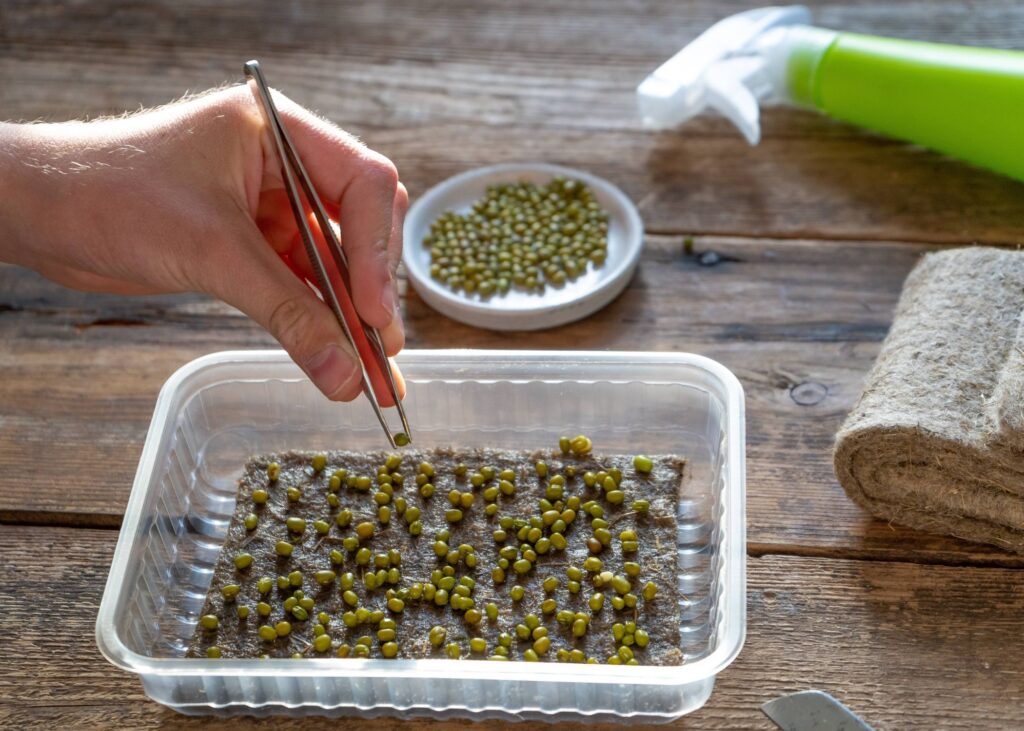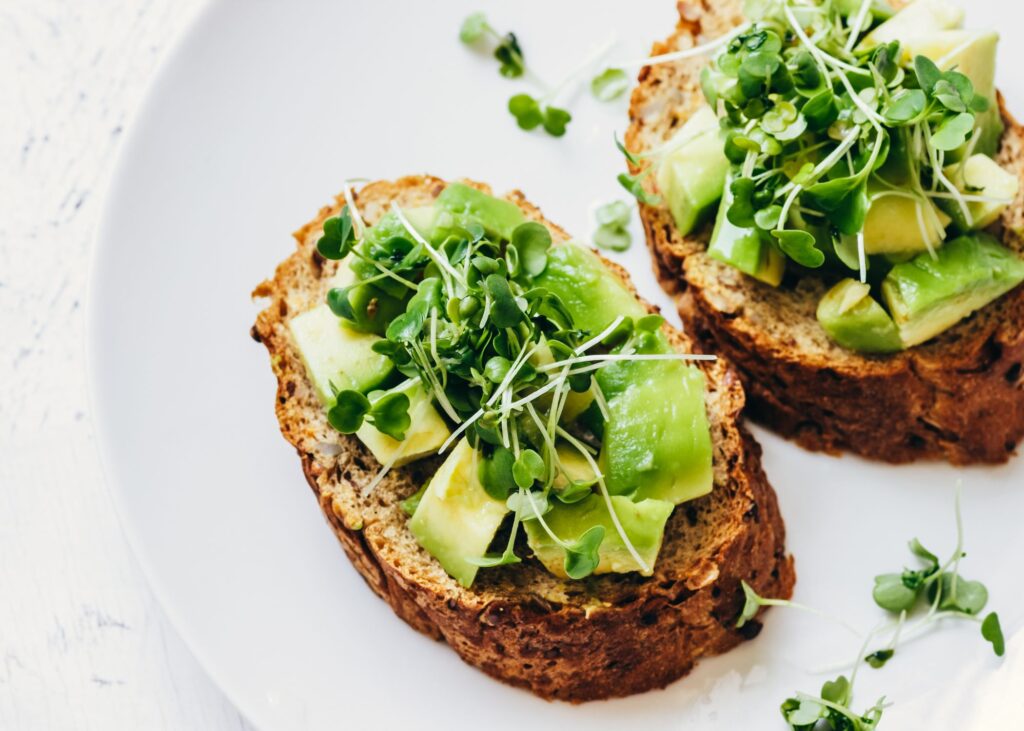
Your salads just got a whole lot more interesting. Welcome to the world of sunflower microgreens. These tiny green plants are here to delight your taste buds because they are incredibly nutrient and flavor-dense. Sunflower microgreens are young sunflower plants that are grown from the seeds of the sunflower plant. They are typically harvested when they are about 7-14 days old. When they are at the stage where they have developed their first true leaves.
Overall, growing sunflower microgreens is a fun and rewarding way to add fresh, nutritious greens to your diet. Experiment with new flavors and textures in your cooking.
- Nutritional benefits: Sunflower microgreens are packed with nutrients, including vitamin E, iron, and zinc, which are essential for maintaining good health.
- Flavor and texture: Sunflower microgreens have a unique nutty and crunchy texture that adds flavor and texture to salads, sandwiches, and wraps.
- Easy to grow: Sunflower microgreens are relatively easy to grow and can be grown in small spaces, making them a great option for anyone with limited outdoor space or access to a garden.
- Quick growing: Sunflower microgreens typically grow very quickly, with many varieties ready to harvest in just a week or two.
- Cost-effective: Growing your own is typically much more cost-effective than buying them from a store, especially if you grow them from seeds.
- Sustainable: Growing your own at home can help reduce your carbon footprint and support a more sustainable food system.
Nutritional Benefits of Sunflower Microgreens
Are you sick of consuming the same vegetables every day? Sunflower microgreens are the ideal addition to your diet if you want to strengthen your immune system, support healthy bones, or simply add a little extra nutrition to your meals.
- Rich in vitamins and minerals: Vitamin E, iron, and zinc, are important for maintaining healthy skin, immune function, and energy levels.
- High in antioxidants: This can help protect the body against oxidative stress and reduce the risk of chronic diseases like cancer and heart disease.
- Anti-inflammatory properties: Sunflower microgreens contain compounds with anti-inflammatory properties, which can help reduce inflammation in the body and prevent chronic diseases associated with inflammation.
- Digestive health: High in dietary fiber, these plants can support digestive health by promoting regular bowel movements and feeding beneficial gut bacteria.
- Blood sugar control: They contain compounds that can help regulate blood sugar levels, making them a good food choice for people with diabetes or other blood sugar imbalances.
- Weight management: Sunflower microgreens are low in calories and high in fiber, making them a good food choice for people looking to manage their weight or lose weight.

Step-by-Step Guide on How to Plant Sunflower Microgreens
Materials needed:
Soil or another growing medium
Water
Spray bottle (optional)
Plastic wrap or humidity dome (optional)
Grow light or sunny windowsill
- Soak the sunflower microgreen seeds in water for 6-8 hours to help them germinate more quickly.
- Prepare your growing tray or container by filling it with soil or another growing medium to a depth of around 1-2 inches.
- Spread the soaked sunflower seeds evenly over the surface of the soil, leaving a little space between each seed.
- Cover the seeds with a thin layer of soil or another growing medium, taking care not to bury them too deeply.
- Water the soil gently but thoroughly, using a spray bottle if desired to avoid disturbing the seeds.
- Cover the growing tray or container with plastic wrap or a humidity dome to help retain moisture and promote germination (optional).
- Place the growing tray or container in a warm, well-lit location, either under a grow light or on a sunny windowsill.
- Keep the soil moist by watering as needed, taking care not to overwater and cause waterlogging.
- After around 7-14 days, the sunflower microgreens should be ready to harvest. They will have developed their first true leaves and be around 2-3 inches tall.
- Harvest the sunflower microgreens by using scissors to snip them off at the soil line.
- Rinse the microgreens in cool water and pat dry with a clean towel or paper towel.
- Store the microgreens in an airtight container in the refrigerator for up to a week.
Harvesting and Storing Sunflower Microgreens
Harvesting and storing sunflower microgreens is a straightforward process. Here’s how to do it:
- Determine when to harvest: Sunflower microgreens are typically ready to harvest when they have developed their first set of true leaves, which usually takes 7-14 days. The microgreens should be around 2-3 inches tall.
- Use scissors or a sharp knife: To harvest the microgreens, use a pair of scissors or a sharp knife to snip the stems just above the soil line. Be careful not to pull or uproot the microgreens as this can damage the roots and soil.
- Rinse the microgreens: Rinse the freshly harvested microgreens gently under cool running water to remove any soil or debris.
- Pat dry: After rinsing, pat the microgreens dry with a clean towel or paper towel.
- Store in an airtight container: Place the microgreens in an airtight container or resealable plastic bag and store them in the refrigerator. They should last for up to a week.
Tips for storing include:
- Avoid washing the microgreens until just before use, as excess moisture can cause them to spoil more quickly.
- Store the microgreens in a container with a paper towel or cloth to absorb any excess moisture.
- Only harvest as much as you need, leaving the rest to continue growing until you’re ready to use them.
- Overall, sunflower microgreens are easy to harvest and store, making them a convenient and nutritious addition to any meal.

The Guide to Including Sunflower Microgreens in Your Diet, From Bland to Grand
There are countless ways to use microgreens in your cooking, so get creative and experiment with different recipes and flavor combinations. In the meantime, here are some recipes to get you started:
Avocado toast with sunflower microgreens: Top toasted bread with mashed avocado, a sprinkle of sea salt and black pepper, and a handful of sunflower microgreens for a simple and delicious breakfast or snack.
Sunflower microgreen salad: Toss your microgreens with other leafy greens, sliced cucumber, cherry tomatoes, and crumbled feta cheese. Dress with a simple vinaigrette made with olive oil, lemon juice, and Dijon mustard.
Sunflower microgreen smoothie: Add a handful of sunflower microgreens to your favorite smoothie recipe for an extra boost of nutrition. Try blending them with spinach, frozen berries, banana, almond milk, and a scoop of protein powder.
Sunflower microgreen pesto: In a food processor, blend sunflower microgreens, garlic, Parmesan cheese, and pine nuts or walnuts until smooth. Drizzle in olive oil until desired consistency is reached. Use as a spread on sandwiches or as a sauce for pasta.
Sunflower microgreen hummus: Blend chickpeas, tahini, lemon juice, garlic, and olive oil in a food processor until smooth. Add a handful of sunflower microgreens and blend until combined. Serve with pita bread or raw veggies for dipping.


